A New Future For Gold in Virtual Reality
Posted onGold is as old as the Earth itself, but we’re still finding new ways to put it to use. Early communications technology relied on the conductivity of gold. Today, technological advances in virtual reality (VR) are also putting the commodity to use.

Virtual reality has made leaps in progress in recent years. Sony, Facebook, and Microsoft have all made significant capital investments. These major players can appreciate the potential of VR as the industry builds to profitability. Meanwhile, ordinary investors are exploring ways to get in the game when it counts: early.
One simple way to invest in the burgeoning VR industry is through the raw materials used in the technology. Microprocessors which include gold plated microscopic transistor pins are the hub of robust computing power needed in VR hardware. Microprocessors are becoming increasingly important as VR programs push the limits of processing power. However, at this early stage, it’s unclear which manufacturing companies will emerge as the leader in VR processing technology.
While many firms are vying for position in the industry, they all share a common need for gold. This demand is evidenced by a 4% growth year-over-year in Q1 of 2017 for gold used in electronics as reported by The World Gold Council.
This growth is a glimmer into the future of popular technologies like VR. Often the earliest indicators of growth are seen in these base materials which form the building blocks of the hardware.
The relationship between gold demand and technological innovation extends beyond VR. Bonding wire, memory chips, LEDs and developments in wireless charging all require gold in the manufacturing phase. Moreover, recent research has revealed that gold can “preserve all the positive characteristics of silicon.” This development has broad implications for the growing sector of wearable technology.
As recently as 2016 gold for use in technology accounted for a demand of 254 metric tons representing nearly 10% of total demand. As innovations in this sector develop this demand is likely to increase. Meanwhile, as we discussed in a previous article, industries are developing around the harvesting of gold in discarded electronics. “The potential revenue from the recycling of e-waste is 2.15 billion Euros, and it’s projected to grow significantly,” remarked Professor Lenny Koh at the Advanced Resource Efficiency Centre at The University of Sheffield. He continues, “By 2020, the market for recycling of e-waste will grow to 3.67 billion Euros.”
These early steps into the world of VR are presenting opportunities for gold investors. However, rising demand is only half of the picture. Sourcing profitable reserves is a time-consuming exploit. The speed of technological innovation will almost certainly outpace resources. Consider that “Only 10 percent of early exploration efforts actually lead to a minable deposit.” The timeline for bringing these rare finds to market is equally burdensome. Often 10 to 15 years will pass before the discovery of a deposit can yield usable inventory.
The titans of Silicon Valley are poised to make VR a technology of the future. The time for investors is now.
Market Update
Posted onUS equities were slightly mixed during trading on Friday capping an end to an epic week of more all-time market highs. This marks the 19th time this year that the S&P 500 has made a new record high. All three indices finished noticeably higher for the week, with the Nasdaq 100 leading the pack with an impressive 2.36% weekly gain.
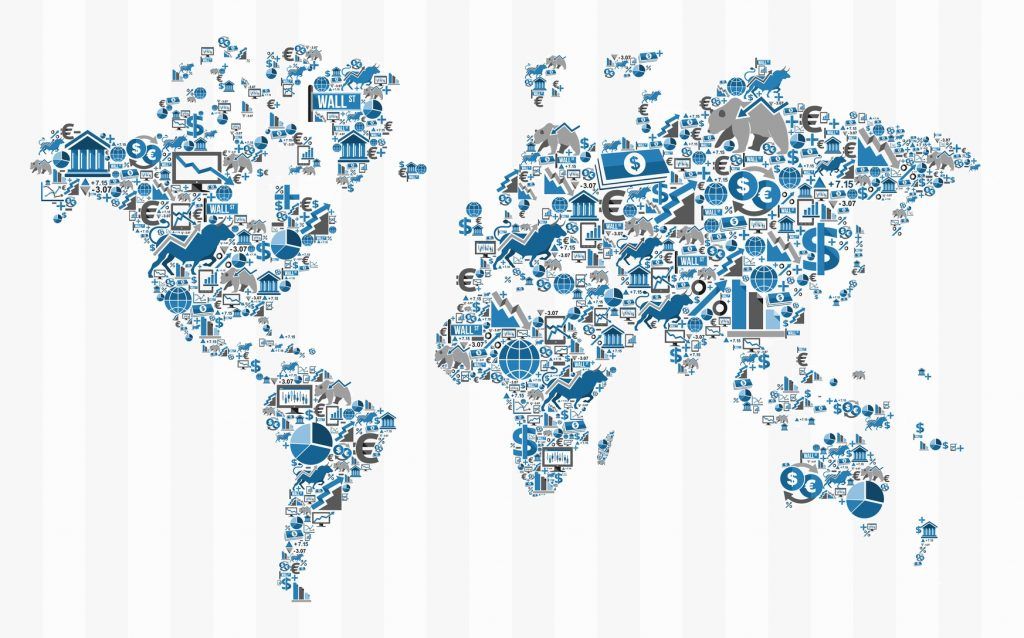
With one of the worst market sell-offs of 2017 occurring only two weeks ago, much of the political fear and investor trepidation that sparked the sell-off has evidently subsided. The 6-day-long market recovery suggest investors took advantage of the discounted prices and capitalized on a buying opportunity.
Shares of major tech companies were some of the best performers of the week. So far this year, tech shares are up around 20% with the big name giants, Amazon, Google, and Facebook outperforming the broader market by a mile.
On the other hand, shares of energy companies did not fare so well last week as the price of crude oil plummeted. Although members of OPEC agreed to extend production cuts into March of 2018, oil prices starkly declined when the news broke that a production cut agreement has been reached. Because reducing the supply of oil is supposed to boost prices, declining prices confused analysts and investors alike.
“The market seems to have lost faith in OPEC’s ability to do whatever is necessary to reduce the massive oversupply and to bring inventories back to the five-year average” by the first quarter of next year, said Thina Saltvedt, an analyst at Nordea Bank AB, when trying to explain the strange reaction in the market.
The price of oil matters not only because it correlates to the price people will pay at the pump, but it also matters because oil and the energy industry as a whole resemble a significant percentage of what most people refer to as “the stock market”.
The energy sector represents 6.3% of the companies in the S&P 500, and the sector is currently down 12.13% year-to-date. Although oil rebounded on Friday, prices still closed in the red for the week, thereby stumping gains in the entire S&P 500 index.
However, not everyone takes such a pessimistic outlook on the energy sector and oil. An oil analyst from BNP Paribas, Harry Tchilinguirian, views the OPEC meeting as a success. He noted that “if agreements had fallen down this would have been a return to the dark days of 2014 and 2015, when it was every producer for themselves.”
Regardless if oil goes back to $100 a barrel or $30 a barrel, the effects will definitely be felt in the equity markets.
In terms of other commodities, gold and silver continued a three-week-long winning streak with the precious metals advancing 1.17% and 3.27% for the week, respectively. Gold is now above $1,270 an ounce and well within striking distance of forming a new YTD high above $1,297.40. Recent terror attacks in Manchester have seemingly increased the desire to move additional cash over to safe-haven precious metals and shy away from riskier assets.
How the Bull Became the Dragon
Posted onAs children, we hear stories explaining how the zebra got its stripes or how the elephant got its trunk. However, in the future, it might be more fitting to imagine how the bull became the dragon.

China is becoming a dominant force in our increasingly global economy. Gold investors in the U.S. are looking for economic indicators within our borders. However, they should be looking abroad to China. Consumer spending is primed as the ethos of the “new economy” in the country takes hold. This change has significant ramifications for gold purchasers.
In previous years China’s economic growth came from government spending. This “old economy” gave rise to infrastructure development sustained with inexpensive labor. This system didn’t work. Today, the country is modernizing with initiatives designed to empower the people. The result is a thriving consumer class. Throughout the first three-quarters of 2016 consumption alone contributed to 71% of the country’s GDP growth. This surge has left some asking what the consumers are buying.
Luxury goods are becoming a major draw amid consumers. Today, the Chinese represent about one-third of the global sales in this category. Their appetite for name brands like Cartier and Louis Vuitton is so high that they’re traveling abroad for purchases. One Consumer Affairs Correspondent writing for The Times reports, “The average Chinese tourist spends almost £3,000 on a visit to Britain, with the wealthiest spending £50,000.” This annual trend has earned the name “Golden Week,” both a national holiday and shopping spree. Consumers in China are moving away from mass produced products to more premium goods according to market researcher McKinsey.
These luxury purchases, which often contain gold, are influencing commodity prices. In 2016 China was the largest gold consumer for the fourth consecutive year. Moreover, in recent years 57% of gold demand came from jewelry purchases, and 60% of this spending comes from India and China. Compounding these figures is increased expenditures in gold bullion.
These two styles of purchase can move in similar patterns because “82 percent of Chinese agree that ‘gold jewelry is as much an investment as a fashion statement,’” According to the World Gold Council. Interestingly, gold sits at the intersection of modernity and tradition. The younger demographic characterized by increased consumer activity wants to be associated with the look of gold. Meanwhile, the older generation is still rooted in the idea that gold “is culturally accepted as a place to put your money,” according to the chief investment officer at Merk Investments LLC. Amid changing times, gold still proves its enduring value among all groups.
Investors today need to consider how international developments like those in China will influence their holdings. Too often we narrow our focus to U.S. headlines. Instead, we should take a more holistic approach and look beyond just bulls and bears. This wider perspective is of particular importance among commodities like gold that are accepted and valued across all countries. Chinese consumers have cast their vote and gold is a clear winner.
Silver Production Fell In 2016 – First Time in 14 Years
Posted onRemember back to college economics? Good old supply and demand? Well, the numbers are tilting favorably for silver. Simply put – the silver equation shows more demand than supply and that is bullish for prices ahead.
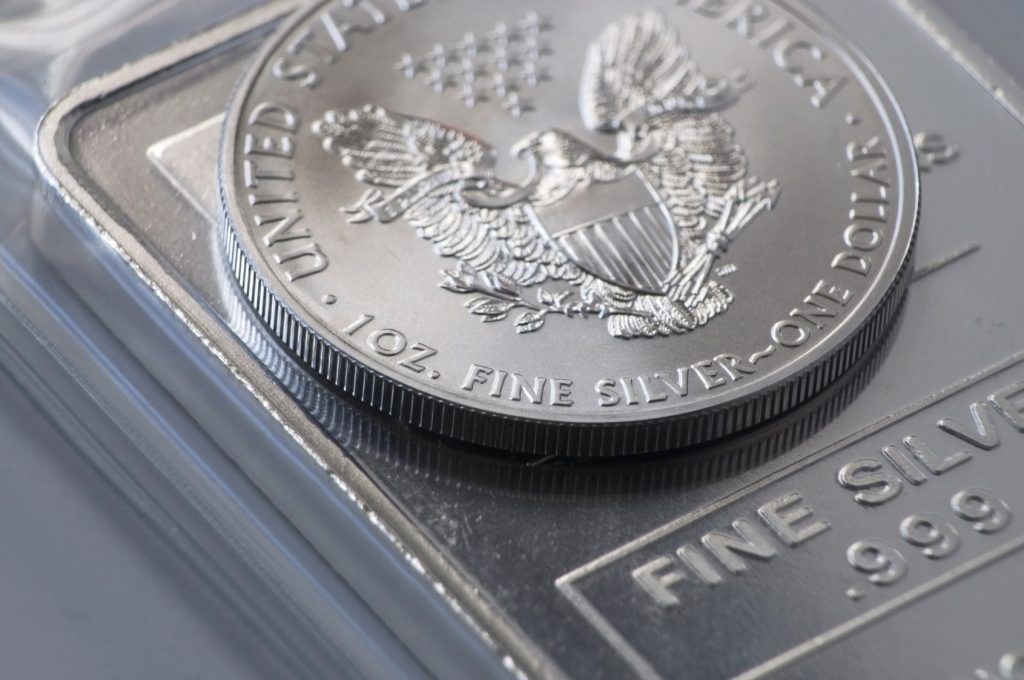
Global silver mine production fell in 2016, for the first time since 2002, according to the newly released World Silver Survey 2017 (Silver Institute and GFMS Team at Thomson Reuters.).
Here’s the numbers:
2016 Supply 1007.1 million ounces
2016 Demand 1027.8 million ounces
Doing the math, that leaves a silver deficit of -20.7 million ounces and ultimately puts upward pressure on prices.
Where Does The World’s Silver Come From?
On the supply side, Mexico was the largest silver producer in 2016, followed by Peru, China, Chile and Russia, the report said.
Who Uses Silver?
Silver is both an industrial and precious metal. Investors who purchase silver see a dual demand base for this commodity currency.
On the demand side, industrial fabrication made up the largest component in 2016 totaling 561.9 million ounces. Jewelry stands in second place at 207 million ounces and coins and bars are in a close third at 206.8. Silverware comprised 52.1 million ounces of total demand in 2016.
It is well known that physical ownership of silver offers investors many of the same diversification properties as gold, but at a much lower entry cost. Gold trades at about $1,257.00 an ounce right now, while you could purchase an ounce of silver for about $17.00 an ounce.
New applications for silver are exploding in industry and manufacturing, which will keep upward pressure on prices. Demand is growing, while supply is shrinking due to reduced mining.
Here’s one example: in 2016, silver demand for photovoltaic applications skyrocketed by 34 percent rise to reach 76.6 million ounces. This growth was the strongest since 2010 and driven by a 49 percent increase in global solar panel installations, the Silver Institute said.
Learn More
Read about fascinating new applications for silver in this LinkedIn article authored by Blanchard CEO & President David Beahm.
Follow David on LinkedIn for weekly updates on precious metals investing.
Investing Strategies
Investors turn to physical precious metals as an important component of portfolio diversification. Many studies have shown that when stock prices go down, gold and silver prices tend to rise – often significantly. Owning physical gold and silver is appropriate for all investors and can improve your long-term investment prospects. The latest supply/demand figures for silver only underscore the positive long-term price outlook for silver.
Silver prices have already been climbing in 2017. Now is a good time to add physical silver exposure to your portfolio before prices climb even more.
A great option to add to your portfolio are silver bullion coins. The 2017 1 ounce American Silver Eagle can be purchased right now for around $19.37. Market prices change daily, call Blanchard for today’s price at 1-800-880-4653.
Political Risks Rattle Markets
Posted onFresh new controversy regarding the Trump administration surfaced on Tuesday night of last week, and the market’s reaction was harsh.
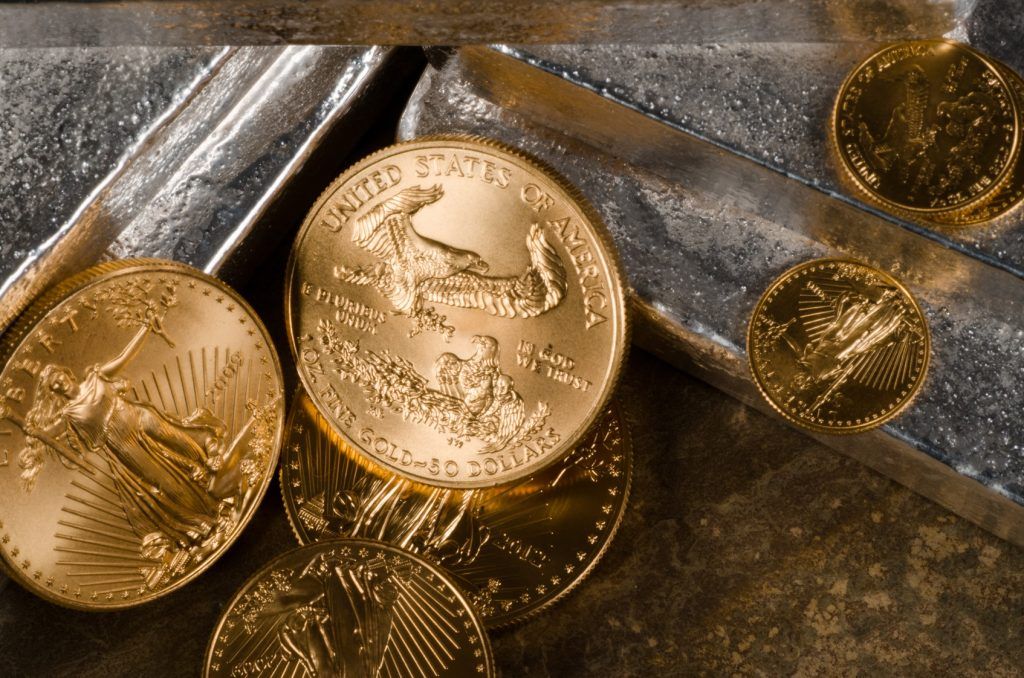
By the end of the day on Wednesday, the Nasdaq 100 was down a little over 2.5%, and the S&P 500 and Dow Jones were both off roughly 1.5%. Given that a major market index has not moved more than 1% in a long time, Wednesday’s trading activity was quite serious and definitely put investors on the edges of their seats.
On an intraday basis on Wednesday, there was simply no reprieve for passive stock investors; every uptick was short-lived. The real talk of the town, however, was the explosion in volatility. The VIX index soared over 35% to climb above 15.
The explosion in volatility is highly interesting, because volatility hit a 23-year low two weeks ago. An article published on Blanchard’s investment page noted the interesting correlation between fresh new lows in volatility and imminent stock markets selloffs. Although it’s impossible to predict extemporaneous political events, the events always seem to occur right after volatility reaches an extreme low.
Because there was a surprising amount of complacency among investors, as noted in the article, the market reacted quite violently as investors rushed for the exit when news broke of President Trump’s recent activity. Investors immediately became less optimistic about proposed tax reform and all of Trump’s promised pro-growth policies.
If he were to be removed form office in an total worst-case scenario, it seems logical that much of the recent market run-up, that’s predicated on his aforementioned growth agenda, would unwind. Even if the administration’s scandal is overblown, it might be more difficult to push through new reform with obstinate members of congress who look at Trump’s recent activity with disdain. This was the logic behind Wednesday’s sell-off.
Both democrats and republicans in congress were also unnerved with the fact that Trump apparently asked the former FBI director, James Comey, to stop an investigation into a mutual connection.
There was talk of comparing Trumps current situation to that of Richard Nixon’s and the infamous Watergate scandal. During the mid 1970s in the height of the scandal, the S&P 500 cratered over 50% throughout the course of the year. As per usual, whenever the market is caught off-guard by a jarring situation, especially a political one, investors seek the safety of gold and bonds. As such, gold was up more than $24 an ounce on Wednesday.
“This week political risk has caught up on the market but it’s still unclear whether it has any legs,” said a Deutsche Bank strategist in a note to clients Friday.
Since Wednesday, much of the fear has subsided and better news has surfaced regarding the current political situation. The rebound in stocks gained more traction on Friday, but gold demonstrated its beauty as an investment as it kept above $1,250 an ounce and didn’t give up much of its gains.
Are We In Correction Territory?
Posted onJust days ago we brought you an article exploring the problems with high valuations in the equity market. We looked at why the Shiller P/E ratio offers warnings to investors given that the measurement is over 75% higher than its historical mean. Outsized stock values reflect heightened expectations. As a result, companies face the ever-increasing burden of growth. Today, investors appear to be awakening to the fact that stock prices are unreasonable. Simultaneously, actions from China are compounding the problems looming for equity investors. These two factors offer reasons to refocus on gold as part of a portfolio.
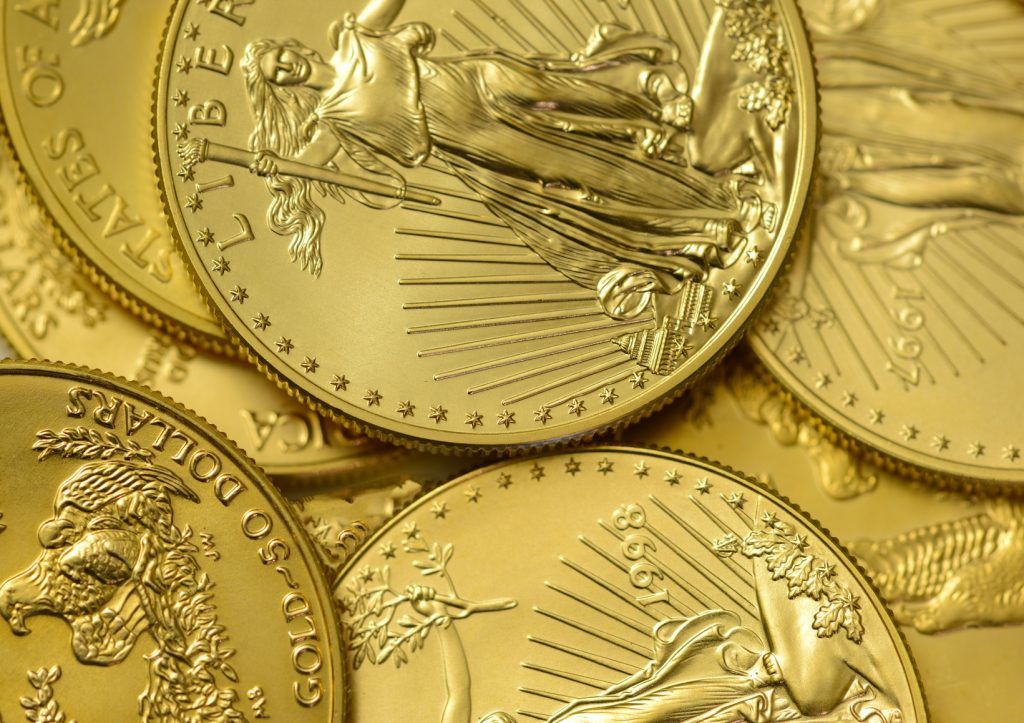
The U.S. stock market plummeted on Wednesday. This drop comes amid increasing political turmoil. Investors, once hopeful for pro-business initiatives, are losing confidence that the administration will deliver on promises. Recent share prices have reflected this optimism, until now. For months investors have been paying today for value expected tomorrow. However, in the last several days tomorrow has started to look cloudy. “Equities are selling off significantly, the impeachment talk has been amplified since last night… It’s just natural that safe haven assets are doing well,” remarked a senior marketing strategist at RJO futures.
The data supports his argument. On Wednesday gold prices jumped to a two-week high. In fact, gold prices have climbed for six consecutive sessions. Troubling headlines and uncertain investigations have distracted policymakers from progress on the changes already priced into equities. It’s too early to know if this is the beginning of the end for the rally in stocks. However, the bull market is nearing a decade and cannot continue forever. Some have already made comparisons to market data from the Watergate era when the S&P 500 lost nearly half its value in less than two years.
Meanwhile, the picture abroad is no more encouraging. Lending in China continues to add to the list of investor woes. Excessive credit has threatened to overheat their market. To prevent this problem the country has recently increased rates. This increase, in turn, has squelched growth. The National Bureau of Statistics reported that value-added industrial output increased by 6.5% year-over-year in April. The problem: this figure was lower than March and well under expectations. Now China is pushing rates down in an attempt to pull off a tightrope act.
Some investment advisors aren’t reassured. A recent survey of 213 asset managers showed that 31% cited China as their biggest concern. Even optimistic readings indicate China will have a less positive effect on the global economy this year.
How can investors respond to a deteriorating picture? Asset class diversification offers some solutions. With greater exposure to gold, there is less reliance on equities. This sentiment has likely been a major reason for the latest surge in gold prices. Long-term equity investors often remark that time restores wealth even amid a downturn. Despite this truth, it’s important to remember that it took nearly 15 years for the Dow to reclaim its 1966 high. Downturns can last much longer than many consider.
Rare Coin Market Mostly Steady in April
Posted onThe rare coin market held mostly steady in April, as U.S. investors continue to chase overvalued equity shares. Relatively tame inflation has also kept rare coin values roughly steady in the first few months of 2017. One index that tracks 87 U.S. rare coins revealed a slight retrenchment in April, but values remain sharply higher over the last ten years.
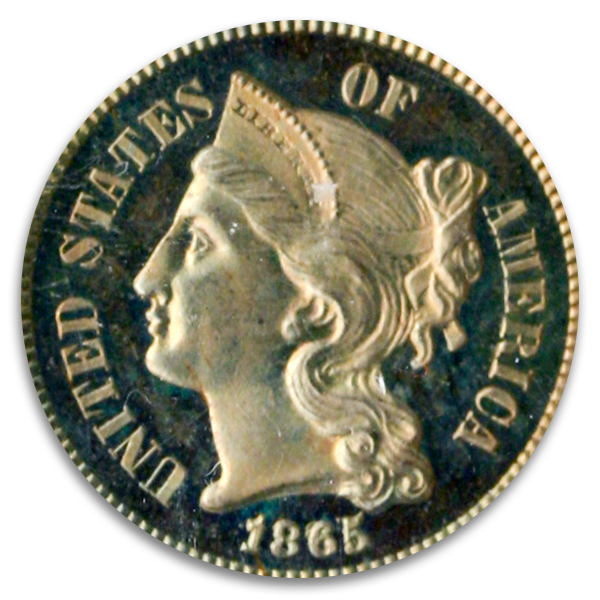
If you’ve invested in gold and silver bullion, but haven’t diversified into rare coins, current price levels offer an attractive entry point.
A Budget Everyone Can Afford
You’ve heard about the importance of diversification in the stock and bond market. It’s important within the tangible asset area too. There’s not a high bar to get started. Some rare coins – the Morgan dollar as an example – could be bought for around $20. More scarce rare coins have sold in the millions.
Investing in rare coins offers long-term investors’ greater diversification within their tangible asset portfolio and also the potential for more significant price appreciation over the long-term.
Here are three things to get you started.
Focus On Rarity and Condition
Rare U.S. coins are typically defined as those ones minted between the late 1700s and 1933. Market value of rare coins are generally assessed from both by their scarcity and their condition. There are third party grading and certification services that rank coins on a scale of 0 to 70. Typically, rare coin investors will want to focus on those graded above 50.
Build Sets
You may have heard the saying the whole is greater than the sum of its parts. Rare coin investors can improve overall returns by building sets, or groups of coins that are related.
One example of a set is to collect U.S. Double Eagle gold coins that were first minted in 1849 and last made in 1933. There are six coins in the U.S. Double Eagle U.S. gold set that can fit just about anyone’s budget.
Build Your Long-Term Wealth
Investing in rare coins as a portion of your overall portfolio can help you increase your total long-term returns. Blanchard and Company partnered with Raymond Lombra, senior advisor to the Dean and professor of economics at Penn State University to conduct long-term market research on the impact of gold and rare coins on a portfolio during inflationary periods.
Here are key takeaways from the study:
- Portfolios that contain at least some gold or rare coins outperform those that don’t
- Rare coins deliver higher average annual returns than gold bullion
- Rare coins provide an excellent hedge against inflation
You win with rare coins in two ways. They hold value as a scarce collectible and also show an impressive long-term return and a hedge against inflation.
At Blanchard, we have hired the best numismatist in the country to personally purchase and curate every coin that we sell. Any coin that we sell has been reviewed and graded in advance, and we will buy back any rare coin that we have sold at any time at the then current market price. We are a family run firm with over 40 years of history and integrity you can trust.
Investor Fear Just Reached a 23-Year Low Last Week
Posted onDuring trading on Tuesday of last week, the CBOE VIX index fell to 9.56, a level not seen since 1993. Although the VIX climbed above 10 later in the week, everyone on Wall Street was buzzing about the record breaking level of low volatility. But what does this mean for the typical investor?
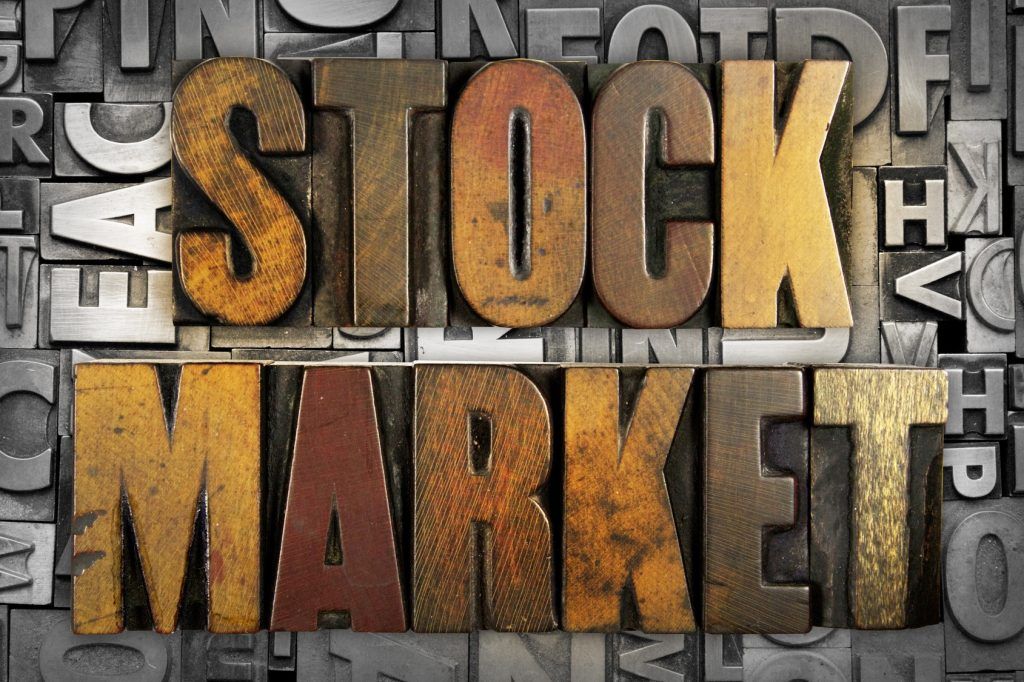
Well, the price/level of the VIX is derived from the pricing of near-term options on the S&P 500 index. A low VIX level equates to cheap options premium, and thus, narrow trading ranges and an absence of fear in the market. Many analysts were baffled that volatility and investor fear could be so low amid foreign presidential elections, unprecedented domestic political change, and reoccurring nuclear threats from North Korea. Despite all of these potential threats, and more, the VIX sank to a multi-decade low.
However, the VIX was not the only index that set a record last week. On Monday, the S&P 500 index hit a fresh all-time high of 2,401.36. The new all-time high was mostly driven by upbeat earnings announcements. Despite briefly rallying on Monday, disappointing earnings from a few of the main retail clothing stores weighed on the market in the final trading days of the week.
Nonetheless, given that stocks are staying near their highest levels in history, a low amount of fear in the market seems reasonable.
“Overall the economy is still growing, unemployment is still extremely low, inflation is very much in check and the US Federal Reserve is raising rates but at a very low pace. I think all that is positive for risky assets.” said Mandy Xu, derivatives strategist at Credit Suisse.
Essentially, a stock market that just keeps climbing, like we have now, seems to be the perfect recipe for a very low VIX. But if the past offers any indication of the future, it might not be entirely smooth sailing ahead. There is a noticeable correlation between low VIX levels and sudden market sell-offs.
When the VIX dropped below 11 for the first time in years on August 6th, 2015, preciesly18 days later on August 24th there was one of the worst intraday market crashes in history. The S&P 500 cratered as much as 10%, the VIX subsequently soared above 50, and spot gold climbed double digits.
The logic behind quickly transitioning from a low volatility environment to a high volatility environment is primarily attributed to the fact that investors are not pricing in any wild price fluctuations. Because of this, investors can rapidly and easily be caught off guard when the market turns against them and positions are not hedged due to low fear sentiment, i.e. a low VIX.
Only time will tell if the historic low in the VIX made last week will precipitate imminent stock market turmoil. One thing is for certain, however, if a little market chaos is indeed lurking around the corner, those who stand to benefit the most are gold owners.
Diving Below The Surface of a Complacent Market
Posted onToday, the stock market resembles the calm surface of a quiet ocean. The CBOE VIX Index (the “Fear Gauge”) recently reached a 23-year low. This standard measure of anticipated volatility in the equities market reflects a broad sentiment of complacency among investors. The market doesn’t expect a significant upswing or downturn anytime soon.

More than ever, the market seems is willing to shrug off major events. “Brexit” has exerted little impact. Trump’s election has only helped stocks, and even the recent news of Comey’s firing has done little to destabilize investor confidence. However, below the surface, there is reason to question the future of equities even for passive investors.
Too many investors see calm markets without considering one important number, the Shiller P/E ratio. In short, this single number measures valuation among the stock market. The calculation divides a stock’s price by its earnings while adjusting for inflation.
A high Shiller P/E indicates stocks are highly valued and expensive. A lower figure means stocks are cheap. Today, the Shiller P/E is 29.7. Why is this finding significant? At 29.7 the Shiller P/E is 76% higher than the historical mean of 16.8.
Moreover, this figure sometimes called the cyclically adjusted price-earnings ratio (CAPE), is the highest on record except for 1929 (market crash) and 2000 (dot com bubble bursting). Over the decades, a clear pattern has emerged. Heightened Shiller P/E ratios tend to occur shortly before a significant market downturn or “correction.”
The problem with a high figure like this is that it reflects the astronomical expectations of investors. At such high valuations and expensive prices, stocks will need to deliver outsized returns to justify their share prices. What if they fail? If these companies are unable to deliver, the market will fall.
Does this mean investors should expect a crash? The answer is no. However, these numbers should instill a sense of vigilance. Volatility might be low amid a soaring equities market, but valuations are equally high. This dichotomy sets the stage for disappointment. Meanwhile, increasing uncertainty surrounding the U.S. political landscape is building. Shiller, the man behind the formula, remarked in Q1 of this year that it’s “high enough to worry about.”
Shiller continued by suggesting “reducing your holdings of stocks, especially for a long-term investor. We can’t time the market accurately, but we know that when it’s this high, over the long term, it usually doesn’t do great.” These comments come from a man who won the 2013 Nobel Prize in Economics.
Equity investors take note. Today’s market might be sending signals that diversification is more important than ever. No one can forecast a crash or proclaim that one is imminent. However, a smart read of the market gives investors reason to reconsider their asset classes. Being too heavy in stocks without an exposure to uncorrelated assets like gold is dangerous because it leaves risk unbalanced.
Investors can take this early opportunity to reevaluate their portfolio to ensure they’re safeguarded in the event we see a market resembling 1929 or 2000.
$20 Billion in Gold ETFs Doesn’t Buy What It Used To
Posted onSome are questioning if active investment strategies are dying. “Investors have pulled $304.7 billion from active U.S. funds in the past 15 months,” reports The Wall Street Journal. Investors have awoken to the higher costs of active funds and tepid performance which often fails to outperform or even match the broad market. Meanwhile, passive investment products are soaring amid a gain of $735.5 billion over the same period.

The frenzy is reaching the gold mining ETF market. “In the past six months, waves of money rushed into a $20 billion complex of interlinked exchange-traded funds that invest in gold mining companies,” explains The Wall Street Journal. Some of these ETFs have taken in $1.4 billion since September. Inflows of this size are starting to change the markets. When this much capital rushes into an ETF within a short period, the funds must purchase more shares. These movements can create problems.
For example, a gold ETF may close its doors to new investors. The reason: fast ascending share prices exceed the value of the underlying assets. Managers and investors are learning that widespread devotion to a passive approach has its problems. In previous articles, we’ve explored why gold ETFs fall short of the benefits offered by holding the physical product. However, here we see a new reason in the form of unwarranted prices. Moreover, these surging share prices appear to stem from investor excitement over passivity rather than the inherent value of the assets.
These recent events illustrate how gold ETFs can create unintended consequences. As a result, some analysts warn that markets will become less efficient. In extreme examples, a publicly traded company might discover that their largest shareholders are a few large institutional investors. These monoliths capture more shares as their index funds pull more passive investors into the fray.
This problem is systemic. As a public company’s market share increases, an index fund would need to follow suit. That is, the fund would need to buy more shares to become more representative of the market. This cycle means the company’s share price continues to ascend due purely to reactive moves from an index fund rather than profitability or sound management decisions. “Some studies suggest stocks included in popular indexes sport higher valuations and tend to move in lockstep with one another instead of responding to fundamentals,” explains The Wall Street Journal.
Ownership of physical gold presents an elegant solution to this problem because it’s free from the fluctuations arising from capricious ETF inflows. Commodities like precious metals are comfortably outside the whirlwind of tumultuous investor psychology. True gold investors seek the metal because of its rarity and not the complexity of leveraging and derivatives common to ETF shares.
The problem is getting worse as momentum towards passive investing grows. “Nearly one in every $5 invested in stock funds is invested in an index fund, up from less than one in every $10 in the year 2000,” explains one journalist at CNBC.
It’s ironic that investors identifying themselves as passive are unwittingly exerting powerful force upon the market.







